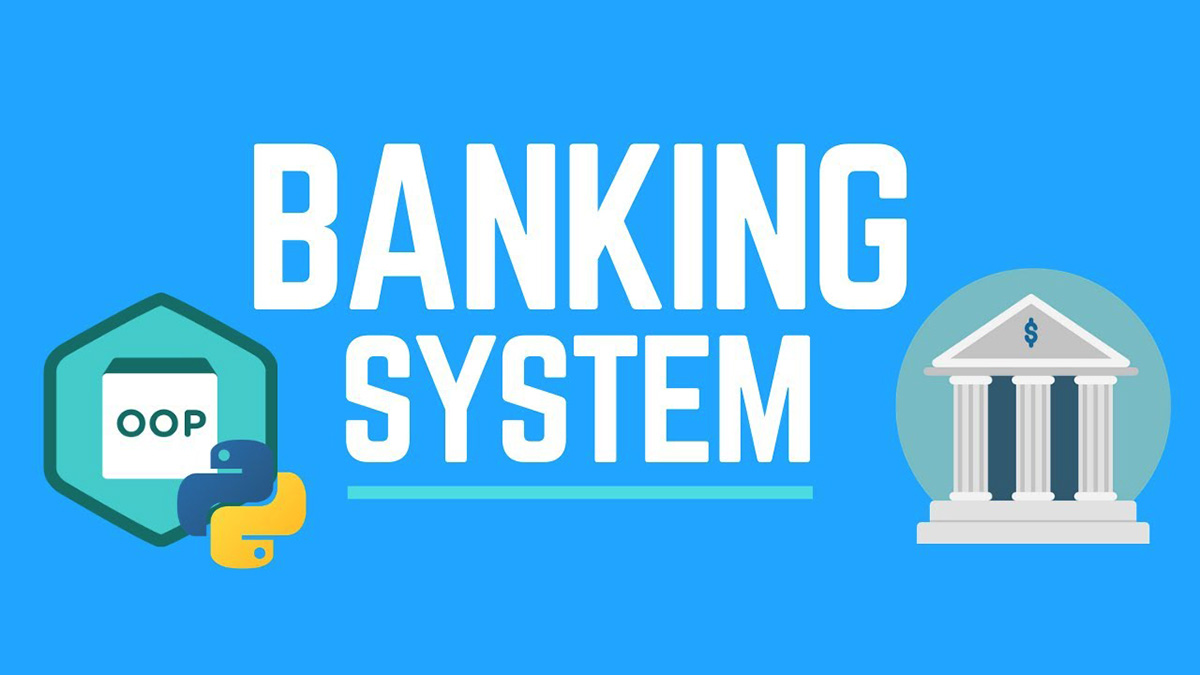Home>Finance>How Much Does A Tonsillectomy Cost Without Insurance


Finance
How Much Does A Tonsillectomy Cost Without Insurance
Published: November 23, 2023
Find out how much a tonsillectomy costs without insurance and explore your financing options for this medical procedure.
(Many of the links in this article redirect to a specific reviewed product. Your purchase of these products through affiliate links helps to generate commission for LiveWell, at no extra cost. Learn more)
Table of Contents
Introduction
Welcome to our comprehensive guide on the cost of a tonsillectomy without insurance. If you or a loved one is considering this surgical procedure, it’s important to have a clear understanding of the potential financial implications. While insurance can help cover medical expenses, not everyone has access to adequate coverage or may choose to forgo insurance altogether.
A tonsillectomy is a surgical procedure that involves the removal of the tonsils, which are two oval-shaped glands located at the back of the throat. This procedure is typically performed to address persistent or recurring tonsillitis, obstructive sleep apnea, or other complications related to the tonsils.
When determining the cost of a tonsillectomy without insurance, several factors come into play. These include the geographical location of the medical facility, the complexity of the procedure, and the specific services required during the surgery. Without insurance, individuals are responsible for paying the full cost of the procedure out of pocket, including fees for the surgeon, anesthesiologist, and hospital or surgical center.
Understanding the average cost of a tonsillectomy without insurance can be helpful in planning for this procedure. It can also be beneficial to explore ways to lower the cost or consider financing options to make it more manageable. In this guide, we will walk you through the average cost of a tonsillectomy without insurance, factors that affect the cost, and strategies to reduce the financial burden.
Please note that the information provided here is meant to serve as a general guide and should not replace the advice of a medical professional. Costs can vary based on individual circumstances and may change over time. It’s always recommended to consult with a healthcare provider and obtain estimates from medical facilities for an accurate understanding of the cost specific to your situation.
What is a Tonsillectomy?
A tonsillectomy is a surgical procedure that involves the removal of the tonsils, which are two lymphoid tissues located at the back of the throat. These glands play a role in the immune system by helping to fight off infections. However, there are instances where the tonsils become inflamed or infected, leading to recurrent tonsillitis or other complications.
Tonsillitis is a condition characterized by the inflammation of the tonsils, resulting in symptoms such as sore throat, difficulty swallowing, fever, and swollen lymph nodes. If these episodes of tonsillitis become frequent or severe, a tonsillectomy may be recommended by a healthcare professional.
The procedure is typically performed under general anesthesia, and there are different techniques that can be used for the removal of the tonsils. The surgeon may use a scalpel, laser, or other specialized instruments to carefully extract the tonsils from their position at the back of the throat.
There can be various reasons why someone may opt for a tonsillectomy. One common reason is the presence of chronic or recurrent tonsillitis, where the tonsils become infected multiple times within a year. By removing the tonsils, the risk of future infections is significantly reduced.
Another reason for a tonsillectomy is obstructive sleep apnea. In some cases, enlarged tonsils can obstruct the airway during sleep, leading to breathing difficulties and interrupted sleep patterns. By removing the tonsils, the airway can be cleared, improving sleep quality and reducing the symptoms of sleep apnea.
In addition to these primary reasons, a tonsillectomy may also be recommended for other conditions such as peritonsillar abscess, recurrent bleeding from the tonsils, or the presence of tumors or growths on the tonsils.
It’s important to note that a tonsillectomy is not always the first line of treatment for tonsillitis or other related conditions. In many cases, medications, lifestyle changes, and other non-surgical options are explored initially. However, if these measures are ineffective, a tonsillectomy may be considered as a viable solution to address the underlying problem.
Why Might Someone Need a Tonsillectomy?
There are several reasons why someone might need a tonsillectomy, ranging from persistent infections to obstructive sleep apnea. Let’s explore some of the common indications that may lead to a recommendation for this surgical procedure.
1. Recurrent Tonsillitis: If an individual experiences multiple episodes of tonsillitis within a year, it can significantly impact their quality of life. Symptoms such as severe sore throat, difficulty swallowing, and high fever can be debilitating. In such cases, a tonsillectomy may be recommended to reduce the frequency and severity of future infections.
2. Chronic Tonsillitis: Chronic tonsillitis refers to a long-term inflammation of the tonsils. This condition can lead to persistent symptoms, including throat discomfort, bad breath, and recurrent infections. If conservative treatments fail to provide relief, a tonsillectomy may be proposed as a more definitive solution.
3. Enlarged Tonsils: In some cases, the tonsils can become abnormally large, causing obstructive sleep apnea. This condition is characterized by pauses in breathing during sleep, leading to inadequate oxygen supply and disrupted sleep patterns. By removing the tonsils, the airway is opened up, allowing for improved airflow and a reduction in sleep apnea symptoms.
4. Peritonsillar Abscess: A peritonsillar abscess is a collection of pus that forms near the tonsils. It can cause severe pain, difficulty swallowing, fever, and swelling of the throat. If the abscess does not respond to conservative treatments or if it recurs frequently, a tonsillectomy may be recommended to prevent further complications.
5. Tumors or Growths: Although rare, the presence of tumors or growths on the tonsils can necessitate a tonsillectomy. These abnormalities may be cancerous or benign, but surgical removal is often necessary for proper diagnosis and treatment.
It’s important to keep in mind that a tonsillectomy is not always the first course of action for these conditions. Before recommending surgery, healthcare providers typically explore non-surgical options, such as medications, lifestyle changes, or targeted treatments. However, if these measures prove insufficient or if the situation is severe, a tonsillectomy may be deemed necessary.
Factors Affecting the Cost of a Tonsillectomy
The cost of a tonsillectomy can vary significantly depending on several factors. Understanding these factors can help you have a better idea of the potential cost you may incur. Here are some key factors that can influence the overall cost of a tonsillectomy:
1. Geographic Location: The cost of healthcare services can vary from one region to another. Factors such as the local cost of living, competition among healthcare providers, and healthcare infrastructure can all impact the pricing of a tonsillectomy. Generally, areas with a higher cost of living, such as major cities, tend to have higher medical expenses.
2. Surgical Facility: The type of facility where the procedure is performed can influence the cost. Tonsillectomies can take place in hospitals, ambulatory surgical centers, or outpatient clinics. Hospitals tend to have higher costs due to the overhead expenses associated with running a larger medical facility. On the other hand, standalone clinics or surgical centers may offer more affordable options.
3. Surgeon’s Fee: The experience, expertise, and reputation of the surgeon performing the tonsillectomy can impact their fee. Surgeons with specialized training or a high demand for their services may charge higher fees. Additionally, factors such as the complexity of the procedure and the time required for the surgery can also affect the surgeon’s fee.
4. Anesthesia: The use of general anesthesia during a tonsillectomy adds to the overall cost. The anesthesia fee depends on factors such as the type of anesthesia used, the duration of the procedure, and the expertise of the anesthesiologist. The presence of an anesthesiologist throughout the surgery ensures your comfort and safety.
5. Pre-operative and Post-operative Care: The cost of pre-operative evaluations, including laboratory tests and consultations, as well as post-operative care, such as follow-up visits and medications, can contribute to the overall cost. It’s important to consider these additional expenses when estimating the total cost of a tonsillectomy.
6. Additional Services: In some cases, additional services may be necessary during a tonsillectomy. This can include medical imaging, pathology tests, or specialized equipment. These services may incur additional charges and contribute to the overall cost of the procedure.
It’s worth noting that these factors are not exhaustive, and the cost of a tonsillectomy can vary depending on individual circumstances. It’s recommended to consult with healthcare providers and obtain detailed cost estimates to get a more accurate understanding of the potential expenses associated with the procedure.
Average Cost of a Tonsillectomy Without Insurance
The cost of a tonsillectomy without insurance can vary widely depending on several factors we discussed earlier. However, to provide a general idea, we can look at average cost estimates to get a sense of the potential expenses involved.
On average, a tonsillectomy without insurance can cost anywhere from $4,000 to $8,000 or more. This cost includes various components such as the surgeon’s fee, anesthesia, surgical facility fees, and any additional services or tests that may be required.
It’s important to note that this average cost is just an estimate and can vary greatly depending on the factors specific to your situation, such as the geographic location and the complexity of the procedure. Costs may also differ between different healthcare facilities.
It’s advisable to consult with healthcare providers and obtain detailed cost estimates for your particular situation. They can help provide a more accurate understanding of the potential expenses you may incur for a tonsillectomy without insurance.
Keep in mind that these estimates are for the surgery itself and do not include other associated costs, such as pre-operative evaluations, post-operative care, medications, or follow-up visits. It’s essential to factor in these additional expenses when budgeting for the procedure.
While the cost may seem daunting, it’s important to prioritize your health. If a tonsillectomy is recommended by your healthcare provider and you don’t have insurance coverage, consider exploring financial options and strategies to help manage the cost.
Next, we will discuss some ways to potentially reduce the financial burden of a tonsillectomy without insurance, as well as financing options that may be available to you.
Ways to Lower the Cost of a Tonsillectomy Without Insurance
If you’re facing the prospect of a tonsillectomy without insurance, there are several strategies you can consider to help lower the overall cost of the procedure. Exploring these options can alleviate some of the financial burden associated with the surgery. Here are some ways to potentially lower the cost of a tonsillectomy without insurance:
1. Compare Costs: Reach out to multiple healthcare providers and request cost estimates for the procedure. Compare the fees charged by different surgeons, surgical centers, and hospitals to find the most affordable option. Be sure to consider factors such as experience, expertise, and reputation when evaluating healthcare providers.
2. Negotiate Payment Plans: Many healthcare facilities offer flexible payment plans for patients without insurance. Speak with the hospital or surgical center’s billing department to discuss options for spreading out the cost over a period of time. They may be willing to work with you to establish an affordable payment plan based on your financial circumstances.
3. Seek Financial Assistance: Some medical facilities offer financial assistance programs for individuals who are unable to afford the full cost of the procedure. These programs are typically based on income and may provide partial or full coverage of the surgical expenses. Reach out to the hospital’s financial counseling department to inquire about any available assistance programs.
4. Consider Outpatient Surgical Centers: Depending on your specific case, opting for a tonsillectomy at an outpatient surgical center can be a more cost-effective choice than a hospital setting. Outpatient centers often have lower overhead costs and can pass on those savings to patients. However, make sure to consider the quality and safety of the facility before making a decision.
5. Research Clinical Trials: In some cases, there may be ongoing clinical trials or research studies related to tonsillectomies. Participating in these trials may provide access to the procedure at a reduced cost or even for free, while also contributing to medical advancements. Speak with your healthcare provider or search for clinical trials online to explore this option.
6. Utilize Healthcare Savings Accounts: If you have a healthcare savings account (HSA) or a flexible spending account (FSA), you can use the funds accumulated in these accounts to cover the cost of the tonsillectomy. Contributions to these accounts are typically made on a pre-tax basis, providing potential tax savings along with the ability to pay for medical expenses.
Remember to discuss these options with your healthcare provider and the medical facility where you plan to have the procedure. They can provide guidance and assistance in navigating the financial aspects of a tonsillectomy without insurance.
Financing Options for a Tonsillectomy Without Insurance
If you’re facing the cost of a tonsillectomy without insurance, it’s important to explore various financing options that can help make the procedure more affordable. Here are some financing options to consider:
1. Personal Loans: Taking out a personal loan from a bank or credit union can provide you with the necessary funds to cover the cost of the tonsillectomy. Shop around for the best interest rates and loan terms that suit your financial situation. Ensure you understand the repayment terms and monthly installment amounts before committing to a loan.
2. Medical Credit Cards: Some credit card companies offer specialized medical credit cards that can be used specifically for medical expenses. These cards often come with promotional financing options, such as zero-interest periods, which can give you time to pay off the balance without incurring additional fees. Pay attention to the terms and conditions of these cards to make an informed decision.
3. Crowdfunding: Online crowdfunding platforms, such as GoFundMe or Kickstarter, can provide a way to raise funds for your tonsillectomy. Create a compelling campaign explaining your situation and share it with your network of family, friends, and supporters. Social media can be a powerful tool to spread the word and garner donations from a wider audience.
4. Healthcare Loan Programs: Some financial institutions offer specialized loan programs designed specifically for healthcare expenses. These loans may have favorable interest rates and flexible repayment terms. Research various healthcare loan providers in your area to explore your options.
5. Negotiate with the Healthcare Provider: Don’t be afraid to negotiate with the healthcare provider or surgical facility regarding the cost of the tonsillectomy. You may be able to reach an agreement on a reduced fee or a payment plan that fits your budget. Remember, healthcare providers are often willing to work with patients to find solutions for affordable care.
6. Charitable Organizations and Grants: There are charitable organizations and grants that provide financial assistance for medical procedures to individuals without insurance. Research local and national organizations that may offer assistance for tonsillectomies or general medical expenses. Reach out to these organizations and inquire about the application process and eligibility criteria.
Before pursuing any financing option, it’s crucial to thoroughly research and understand the terms and requirements. Carefully consider your budget and the long-term financial implications of the chosen option. It’s also a good idea to consult a financial advisor or counselor who can provide guidance on the best approach for your specific situation.
Remember, the costs associated with a tonsillectomy without insurance can be daunting, but there are resources available to help make the procedure more manageable. Don’t hesitate to explore these options and speak with healthcare providers and financial institutions to find a solution that suits your needs.
Conclusion
When considering a tonsillectomy without insurance, it’s important to have a clear understanding of the potential costs involved and explore strategies to help make the procedure more affordable. While the cost of a tonsillectomy can vary depending on factors such as geographic location, surgical facility, and surgeon’s fees, the average range falls between $4,000 to $8,000 or more.
To lower the cost of a tonsillectomy without insurance, it’s beneficial to compare costs from different healthcare providers, negotiate payment plans, seek financial assistance programs, consider outpatient surgical centers, research clinical trials, and utilize healthcare savings accounts. These options can help reduce the financial burden and make the procedure more accessible for individuals without insurance coverage.
Additionally, exploring financing options such as personal loans, medical credit cards, crowdfunding, healthcare loan programs, and seeking assistance from charitable organizations or grants can provide further avenues for funding the tonsillectomy.
Remember, it’s crucial to consult with healthcare providers, surgical facilities, and financial institutions to obtain detailed cost estimates and guidance specific to your situation. They can offer insights and assistance in managing the financial aspects of the procedure.
While the thought of incurring medical expenses without insurance can be daunting, prioritizing your health is essential. Investing in a tonsillectomy can provide long-term benefits by alleviating persistent infections, improving sleep apnea symptoms, and addressing other related conditions.
Before making any decisions, it’s important to thoroughly evaluate your financial situation, consider your options, and find a solution that aligns with your budget and healthcare needs. Remember to prioritize your well-being and seek care from qualified healthcare professionals who can guide you through the tonsillectomy process.
By exploring different ways to lower the cost, accessing financing options, and taking proactive steps, you can navigate the financial challenges and undergo a tonsillectomy without insurance coverage.














